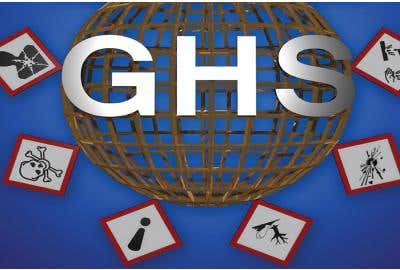OSHA Hazard Communication (HAZCOM) Standard and Training Requirements


OSHA regulation regarding Hazard Communication Standard (HCS) requires chemical manufacturers and importers to disseminate information about health hazards and physical hazards caused by their produced chemicals and associated protection measures, through labels on shipped containers and Safety Data Sheets (SDS). According to this standard, employers using hazardous chemicals in the workplace must also develop and instrument a written Hazard Communication (HAZCOM) Program, including training, for all exposed and potentially exposed workers. HAZCOM is second among top 10 OSHA's most frequently cited standards in 2016.
What is GHS?
The Globally Harmonized System of Classification and Labeling of Chemicals (GHS) provides criteria for the classification of health, physical and environmental hazards caused by chemicals, to be included on labels and SDS, adopted by the United Nations in 2003. This system helps eliminate inconsistency between different regulatory authorities in different countries, providing an internationally harmonized approach to classification and labeling of chemicals and chemical hazards. As a result, its implementation will benefit exposed workers and their companies, the environment, and international trade.
Revision of HAZCOM Standard in 2012
OSHA revised their HAZCOM standard to align with the Globally Harmonized System of Classification and Labeling of Chemicals (GHS) on March 26, 2012. According to this revision, chemical manufacturers and importers must provide label with harmonized elements, including:
-
Product identifier: how hazardous chemical is identified (chemical name, code number or batch number).
-
Signal word: level of severity of hazard (“Danger” or “Warning”).
-
Pictogram: shape of a square set at a point with black hazard symbol on a white background with red frame wide and visible enough. OSHA designated eight (8) pictograms to be used under this standard.
-
Hazard statement: nature of hazards of a chemical and degree of hazard. For example: “Causes damage to kidneys through prolonged or repeated exposure when absorbed through the skin.”
-
Precautionary statement: recommended measures to reduce or prevent negative effects caused by exposure to hazardous chemicals.
-
Name, address, phone number of chemical manufacturer, distributor, importer.
Safety Data Sheets now exist in a specified 16-section format. OSHA also released 432-page technical guidance for classification of chemicals in February, 2016.
HAZCOM Training Requirements
According to the 2012 revision, employers were required to train workers by December 2013 on these changes. OSHA also specified that “employees are to be trained at the time they are assigned to work with a hazardous chemical” so they have such knowledge and be well prepared prior to the exposure. Workers must acquire additional training when a new hazard is introduced into the work area, not a new chemical. “For example, if a new solvent is brought into the workplace, and it has hazards similar to existing chemicals for which training has already been conducted, then no new training is required.” If a new hire received prior training by past employer or other entity, he or she doesn’t need to be retrained. However, company specific training, such as where Safety Data Sheets are located, a company’s labeling system, hazards of new chemicals, etc. would be necessary.

